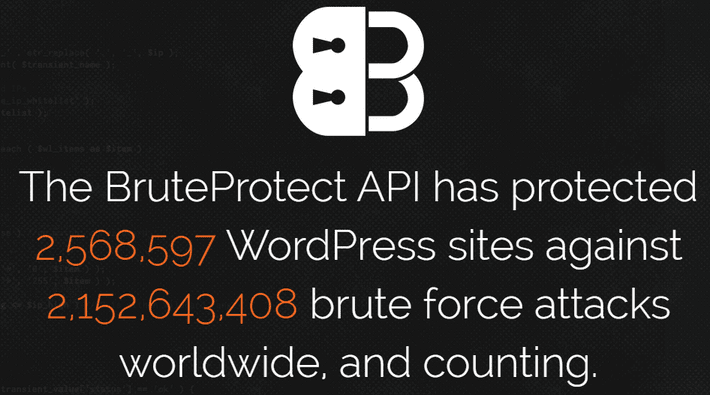One of the biggest WordPress new items of late has been the announcement that Automattic has acquired WooThemes, the company behind the free WordPress eCommerce plugin, WooCommerce. There has been a good deal of speculation – as one might expect – about what this might mean for the WordPress platform, in light of Automattic’s influence on its direction.
Over the years, Automattic has (as anybody who knows anything about the organization will be aware) influenced WordPress a lot, partly through its acquisitions. There have been quite a few over the years, the company having raised huge sums of money from investors in the past, beginning with Gravatar nearly a decade ago.
In this article, we’re going to take you back and have a look at some of Automattic’s investments, some of which have been highly successful and others that have – to be gentle – been less successful. By the end, you’ll (hopefully) have a better understanding of Automattic’s mindset and where that might lead the wonderful platform that is WordPress in the future.
However, prior to all that, it’s worth taking a quick look at the basics of what exactly Automattic is, and how it influences the WordPress project.
Background: Who and What Is Automattic?
Since we’re taking a look at the ancient history that is 2007 onwards, we may as well begin the lesson reminding ourselves about Automattic.
Most famously the company behind WordPress.com (different to WordPress.org), Automattic’s name is a play on its founder’s, Matt Mullenweg, and it was founded in 2005.
For such a big web company in terms of the monthly page views it receives – crucially on WordPress.com – it has, at the time of writing, a relatively small workforce, with only 389 employees. Nevertheless, they hail from nearly 40 different countries around the world. As well as its own products and those it has acquired, Automattic puts time into various WordPress-based Open Source projects like core WordPress and its mobile apps.
And now, on with the acquisitions.
Last Decade’s Acquisitions
Gravatar
![]() We begin with Gravatar, a brand you’ll probably recognize, acquired by Automattic in 2007. At the time of the acquisition, Gravatar had 115,000 users, while WordPress.com’s own avatar system had around a million. Now, by its own reckoning, the service delivers more than 8,000,000,000 requests for avatars every single day. From the beginning, Automattic plowed its resources into it by migrating requests to its better servers, making the service free, and later making accounts easier with WordPress.com integration.
We begin with Gravatar, a brand you’ll probably recognize, acquired by Automattic in 2007. At the time of the acquisition, Gravatar had 115,000 users, while WordPress.com’s own avatar system had around a million. Now, by its own reckoning, the service delivers more than 8,000,000,000 requests for avatars every single day. From the beginning, Automattic plowed its resources into it by migrating requests to its better servers, making the service free, and later making accounts easier with WordPress.com integration.
Undoubtedly, Automattic’s involvement with the Gravatar service has enabled it to scale and work as effectively as it does today on a huge number of services across the Web.
BuddyPress

Think forward to the first quarter of 2008, and Andy Peatling has created a social network to work with WordPress MU (now Multisite) which Automattic acquires. Or more specifically, they hire Peatling, who still works for Automattic today. However, nowadays while Automattic’s staff do work on the plugin as one of their open source projects, Automattic don’t own or control BuddyPress. They passed on the rights and control to the charitable WordPress Foundation in 2010, accompanying bbPress and the core WordPress project. This effectively gives ownership of the project to the wider WordPress community while Automattic continues to help improve the software.
When acquiring BuddyPress, Matt hoped:
Someday, perhaps, the world will have a truly Free and Open Source alternative to the walled gardens and open-only-in-API platforms that currently dominate our social landscape.
While perhaps no single alternative is available yet through BuddyPress, continuing improvements to BuddyPress and its integrated plugins open this opportunity up for the future.
IntenseDebate

There are a great many ways to do comments with WordPress, whether it be through the native system, Automattic’s own Jetpack plugin’s comments system or a service like IntenseDebate. Move from BuddyPress to September 2008 and Automattic acquires IntenseDebate, a commenting system which can be enabled on a variety of services such as Blogger and Tumblr, as well as WordPress installations. WordPress’s own comments system now features much of IntenseDebate’s functionality, like advanced comment moderation, blacklisting, and comment threading.
Automattic’s changes to the systems comprised better integration with their existing services like Gravatar, as well as developing more of the aforementioned features to add to the service.
PollDaddy

Moving another month ahead brings us to what is now one of Automattic’s best-known products. PollDaddy is an immensely popular polling service, receiving millions of responses to various quizzes and polls every year.
Integrated with WordPress.com accounts since Automattic’s acquisition of the service, a lot of work has actually gone into changing the programming language behind the service to make it more scalable. When requiring the purchase of licenses for each new server, providing the free service many users enjoy was far too expensive.
As a result of Automattic’s investment and involvement, PollDaddy boasts a faster service used by many more people and, of course, new and improved features come more quickly with its increased workforce.
blo.gs

Acquired in 2005 by Yahoo!, then by Automattic in 2009, blo.gs –despite boasting a rather excellent domain name – would probably rank as one of the least notable of Automattic acquisitions. Who knows, maybe Automattic has plans to reinvigorate the service at some point, but right now the ping service looks somewhat tired and the latest update to its website seems to have been the news that Automattic acquired it, meaning there has been an update deficit lasting six years.
On Automattic’s acquisition of the service, Matt said:
We’re looking forward to beefing up the service and giving it a refresh, while continuing its reputation for reliability.
At the same time, he did praise Yahoo! for transferring ownership, noting:
I think most companies would have just shuttered it.
While the service seems to have narrowly avoided that fate under its Automattic ownership, it can’t really be said that the planned “refresh” has been delivered either.
After the Deadline
You’ve most likely seen After the Deadline in the Jetpack plugin as the Spelling and Grammar feature.
You might not have heard of the final Automattic acquisition of last decade, After the Deadline, but you may well have used it. Purchased at the end of summer 2009, the contextual spelling and grammar checking service (claiming to be better even than the New York Times’ editing) was instantly enabled for 7,500,000 blogs across Automattic’s WordPress.com network. It replaced the default spell checking that was available for WordPress at the time and was also released for self-hosted users, initially as a standalone plugin and through browser extensions. Although references to the actual name of the product are now less obvious, After the Deadline is still widely used, as a part of Automattic’s Jetpack plugin, under simply “Spelling and Grammar”.
There haven’t been any radical changes to the functionality of the extension since Automattic’s acquisition, but its integration with WordPress.com and Jetpack have made it a very good investment. It adds exceptionally useful functionality, one now key for many bloggers on the platform.
Moving on, we visit some more recent parts of Automattic’s acquisition history.
Acquisitions 2010 to Mid-2014
Plinky

Plinky was the first, and indeed only, Automattic acquisition of 2010 – although it was also the year the company transferred its bbPress and BuddyPress ownership to the charitable WordPress Foundation, as mentioned earlier.
The service provided inspiration for blog posts, posting daily prompts for its users to create content. Automattic presumably acquired it because of its obvious interest in blogging and inspiring its WordPress.com users into using its service and creating content. Plinky acted as quite a cure to writers’ block, advertised through WordPress.com – that is, until it was discontinued in 2014. As an alternative, Automattic provides The Daily Post blog on WordPress.com to provide inspiration for content. However, The Daily Post is a misnomer, and it was a shame to see the discontinuation and archiving of Plinky.
CodeGarage

After a gap of two years, Automattic bought another company, CodeGarage, when it hired its creator. CodeGarage was a web backup and security service whose clients, it was felt, could be served better with the scalability afforded by Automattic’s greater resources. The service was migrated to Automattic’s existing VaultPress service six months after the acquisition.
Simperium

January 2013 and Automattic acquires app-building data handling API Simperium. Described as a “new data layer” for developers, the system is actively worked upon by Automattic who also keep Simplenote – the application that inspired the API – running.
The idea of bringing Automattic in to work on the service was to increase the capability to develop new features for collaborative app-building, which seems to be successful as of now.
Poster

Automattic’s next acquisition-of-sorts came in the form of iOS app Poster – and more importantly, its developer, Tom Witkin – in June 2013. The app, a paid-for WordPress client, was promptly removed from the App Store and Witkin worked with the Automattic team on their apps. Witkin is no longer with Automattic and while the app was supported for users who had already invested in the client, some did lament the loss of the service in the long-term. Its loss focused the market ever more on Automattic’s market-dominant WordPress apps.
Lean Domain Search

Lean Domain Search was Automattic’s subsequent acquisition, coming swiftly after Witkin’s Poster, in July 2013.
The creator of the domain name service, Matt Mazur, also joined Automattic as a developer at this time, and the service was integrated into WordPress.com for users wishing to purchase their own domain name for their Automattic-hosted blogs.
There are obviously several reasons for Automattic’s interest in this service, from its usefulness in their existing provision to the hiring of a new developer in Mazur, but the upshot for the service was that it became free to use and accessible by more users! Its inclusion in WordPress.com also made that service better for more professional use.
Cloudup

In September 2013, Automattic acquired the file-, image-, music-, video- and document- stream sharing service, Cloudup, in order to use its human resources to develop it. Plans were also put in place to integrate Cloudup’s streams into WordPress.com and Jetpack supercharged self-hosted blogs.
Cloudup is now a full-featured, mature service for sharing Web content, so it seems to have fared well with Automattic’s experience, guidance and support. WordPress also makes it easy to embed Cloudup content in your blog posts using the Cloudup embed block.
Longreads
![]()
Longreads joined the Automattic fold in April 2014, apparently after realizing that the two organizations’ missions were complementary.
Featuring “stories” (fiction and non-fiction), the membership site recommends the best literature it can find to its users. Its association with Automattic has enabled the potential doubling of its editorial budget because the company matches membership fees paid – those effectively being a subscription to ensure editorial quality.
Scroll kit

Scroll kit was an advanced WYSIWYG website creator (offering not entirely dissimilar features to WordPress.com, thus competing with Automattic) up until April 2014, when its two-person team was hired to begin work on Automattic’s WordPress.com product team and the service was discontinued.
The founders, Kate and Cody, noted an affinity with the WordPress platform, having got into web coding with it and – despite obvious sorrow at seeing their own product finish – look to bring a lot of experience from developing Scroll kit to the WordPress.com service. Like Automattic, Scroll kit had a similar view on opening up the web to as many people as wanted to publish on it, with the team’s move to Automattic undoubtedly continuing and enhancing the positive attitude within the company towards the democratization of publishing.
And now, we reach some acquisitions that even WordPress newbies might remember.
Recent Acquisitions
BruteProtect

One year ago (August 2014), Automattic acquired the BruteProtect API and integrated it into its Jetpack plugin where it is now one of the most useful features to have enabled, protecting site login pages against networks attempting to gain access to a WordPress back end.
Whilst the API was great when Automattic acquired it – with lots of work having been done on UX prior to its purchase – there is a very clear effect of Automattic’s involvement: namely, scale.
In July 2014, BruteProtect reported its hundred-millionth protection against an attack – not a poor statistic 14 months after launch by any means, and a remarkable achievement of growth even before Automattic’s involvement. However, now just 13 months later, 2.1 billion attacks have been protected against. And it’s not just that there are more brute force attacks than ever before; in July 2014, just over 100,000 sites utilized BruteProtect. Since its inclusion in Jetpack, just a year later, nearly two and a half million have been added to that number.
With very little doubt, it can be said that Automattic has been able to roll out this important protective service to a huge number of sites far more rapidly than BruteProtect would have managed on its own, despite its formidable record.
These impressive statistics show just how much influence Automattic has to achieve widespread uptake with the right services.
Code For the People

The six-person, UK-based Code for the People team was acquired by Automattic in November 2014, joining the WordPress.com VIP Team.
The skills they had developed whilst creating websites with WordPress for their clients are now being put to use creating good user experiences for WordPress VIP clients. Explaining the reasons behind the acquisition in a press release, WordPress VIP said that the team’s experience in solutions for certain areas and contributions to the WordPress project in the past made it suitable to join in with one team member leading development of a new WordPress core version.
Of course, Automattic’s acquisition of the staff did mean that they stopped their website consultancy and development services in favour of utilizing their skills on the WordPress.com VIP projects.
WooCommerce

And now we return to where we started: the most recent (May 2015) of Automattic’s acquisitions, WooThemes – and the team behind eCommerce plugin, WooCommerce.
In an acquisition dubbed Woomattic, WooThemes hopes the move will enhance its resources for scaling up its operation to meet increasing community needs. Matt explains why Automattic thinks the company is such a worthwhile investment (or so you’d hope, given that Mullenweg’s company reportedly spent $30,000,000 on the purchase):
What will become of this new partnership is something we shall have to wait to find out, but for the sake of WordPress’ future success, it seems preferable that ambitions with WooCommerce are fulfilled, opening up the platform to even better eCommerce provision and cornering new parts of the web market.
What We’ve Learned
Compared with other companies serving as many users, Mullenweg’s Automattic has remarkably few employees, yet a formidable amount of influence when it comes to web publishing and its most popular platform, WordPress.
Although not all of its acquisitions have been completely successful, and some have been without interest in maintaining current services, Automattic generally has a good track record for enhancing services, especially their scalability. Meanwhile, it has demonstrated its care for the WordPress project and community through the time it puts into the Open Source project, and handing over acquisitions such as BuddyPress to the charitable WordPress Foundation.
Its acquisitions tell us a bit about where it’s taking itself as a company – improving its VIP service recently – and where it wants to steer the WordPress project. With the announcement from Matt that he intends to more than double WordPress’ market share, the focus on eCommerce almost certainly shows expansion into new parts of the web market, with the push to be led by Automattic.
What the future holds for the platform isn’t entirely certain, but it looks bright with many exciting advancements surely to come. Keeping an eye out for any further Automattic acquisitions should give us further clues about where the company might be seeking to move the platform, as it seems it will with its WooThemes acquisition. With Automattic looking to expand its workforce across the globe, it seems likely that the company will grow and be able to do even more development work.
With plenty more to come, do you think there are any acquisitions Automattic should make in the near future? Tell us about it – and why you believe it would be good for the WordPress project – in a comment.
Image Credit: EGOR_21 / Shutterstock.com









Perhaps we’ll see more developers working on Woo Commerce in the near future, I think its great if slightly flawed.
Really hope that Woocommerce would get much better now. One of the most important plugin for alot of wordpress users.
You forgot one acquisition.
Late 2014 Automattic paid no less than $100,000.00 for the domain name thesis.com only to (be able to) redirect it to themeshaper.com
Some corrections:
* BuddyPress (the trademark, the project, whatever) is *not* part of the WordPress Foundation. Automattic retain ownership.
* Automattic do not contribute any staff time towards to the project, and they have not since around 2009-10 (about a year after Andy Peatling was hired).
Great post very detailed and informative
I have NO idea what this sentence is supposed to mean:
“When requiring the purchase of licenses for each new server, providing the free service many users enjoy was far too expensive.”
Conflicting tenses and gerunds.
Hi Tom,
Thanks for sharing a nice piece of information. Great to hear that e-commerce is going to be easier than ever before with this development. I am a newbie and I already use WordPress for my self and my clients. Never wanted to learn coding or programming. WordPress provided me the facility to create blogs and websites without writing code. Just a little bit of HTML if it is necessary at all. I am planning to learn e-commerce and already downloaded woocoomerce plug to study and hope I can help my customers there as well.
Very interesting… I had no idea about Automattic’s story and acquisitions.
More interesting is the direction they are headed. Seems like WordPress will just get better and better as a platform.
While I like WooCommerce, there are many of problems with it so I’m excited about the new ownership!
Interesting post about the story of Automattic.
Now WooCommerce will be better and better. We hope it will be more similar to the great PrestaShop.
woocommerce soon may no longer be free……
I’d be very surprised if they started charging for it with the plugin being on the repository and having a profitable business for add-ons.
Thank you for this big picture overview! It was very helpful and interesting for me to read.
Let’s hope they make Woocommerce as good, or better, as it is right now…
It’s a important plugin for alot of ours clientes…
Great insights into the mysterious forces that influence the incredible platform that is WordPress! Fascinating how the founder’s thinking balances between commercial imperatives with the spirit of the WordPress ideals. I never realised Automattic was so influential. Where next?
Great resume. We use Woocommerce as our preferred ecommerce platfrom for WordPress. So all we can do is sit and wait and fingers crossed it will only be for the best not the worst.
Cheers guys for the update
I really hope they don’t screw this up or make it a paid only service. All I can think of is they buy out the companies and then don’t invest or keep the development of the software up to date and then it gets ditched like some of these other acquisitions. Acquisitions aren’t always a good thing.
Great stuff Tom. Any thoughts on whether WooCommerce be able to dominate SAAS ecommerce via WordPress.com? 🙂
WooCommerce running an a SaaS using WordPress.com so it is more like Shopify would be very impressive. Then you would have access to all of the plugins you would need to make your store work with correctly setup hosting, caching and object caching all for one monthly fee.
Thanks for this information, really helpful and interesting to know the company behind WordPress a bit more.
Great post Tom. Love getting the big picture.